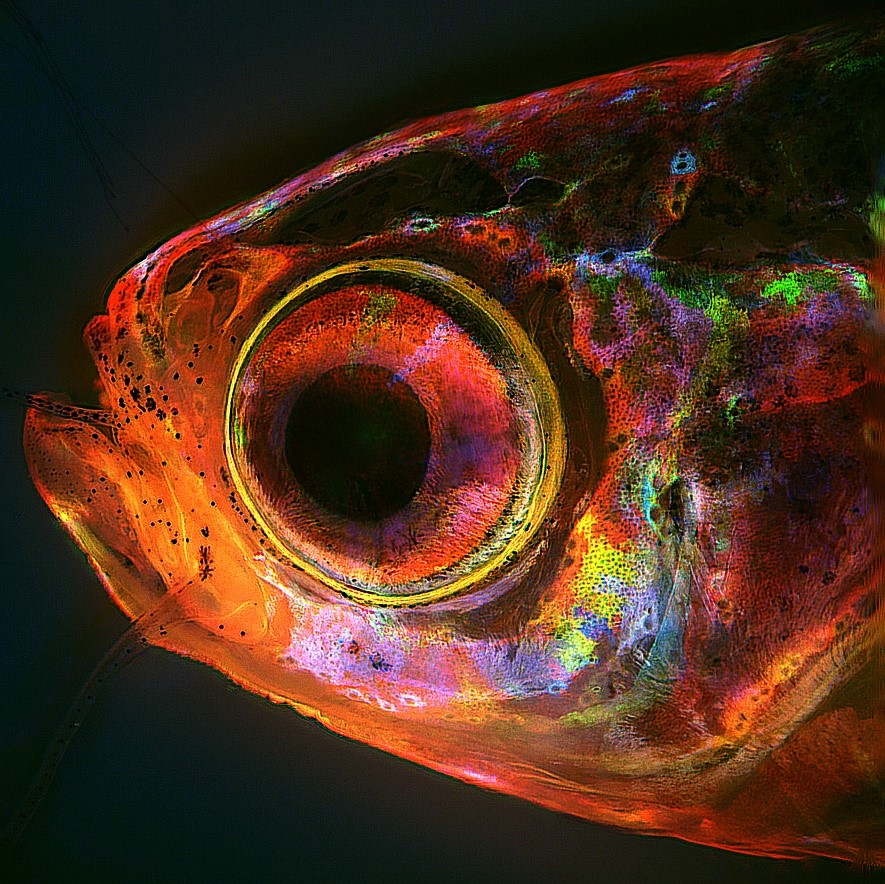單一幹細胞可以長多大? 斑馬魚告訴你
- 作者:Hsiao-Yuh Roan, Tzu-Lun Tseng, Chen-Hui Chen
- 期刊: Development 2021 Sep 15;148(18): dev199669 https://journals.biologists.com/dev/article/doi/10.1242/dev.199669/272161/Whole-body-clonal-mapping-identifies-giant?guestAccessKey=7ad762b4-8b98-49fd-9792-b23f77ecd3ec
脊椎動物器官的發育,需要很多幹細胞同時進行複製、分裂。雖然我們對幹細胞的功能已經有很多的了解,但是為什麼在相似的生長環境下,有的幹細胞貢獻多? 有的幹細胞貢獻少? 為什麼個別幹細胞的增生有很高的異質性 (clonal heterogeneity)? 目前學界所知仍然相當有限。利用斑馬魚表皮幹細胞作為模型,陳振輝及其團隊開發新型的基因轉殖魚,結合大尺度「公分等級」的影像平台,與斑馬魚魚體平坦的特性,同時追蹤、分析斑馬魚體表所有幹細胞的生長行為。他們發現不同的體表區域,幹細胞的行為有不同程度的異質性,細胞外基質 Lamb1a在基底細胞的表現及其活性是關鍵。這項研究成果開發了新型的影像工具和平台,首次達到從動物個體巨觀的角度,探討個別幹細胞生長的機制。此研究已於本(110) 9 月刊登於國際發育生物學期刊《發育》(Development) 的特刊選集 (Special issue: Imaging Development, Stem Cells and Regeneration)。
此研究由中研院及科技部支持,研究團隊包括第一作者阮筱彧、曾子倫、陳振輝。研究論文標題為:Whole-body clonal mapping identifies giant dominant clones in zebrafish skin epidermis。
Whole-body clonal mapping identifies giant dominant clones in zebrafish skin epidermis
Development 2021 Sep 15;148(18): dev199669
Hsiao-Yuh Roan, Tzu-Lun Tseng, Chen-Hui Chen
Abstract
Skin expansion during development is predominantly driven by growth of basal epithelial cell (BEC)-derived clonal populations, which often display varied sizes and shapes. However, little is known about the causes of clonal heterogeneity and the maximum size to which a single clone can grow. Here, we created a zebrafish model, basebow, for capturing clonal growth behavior in the BEC population on a whole-body, centimeter scale. By tracking 222 BECs over the course of a 28-fold expansion of body surface area, we determined that most BECs survive and grow clonal populations with an average size of 0.013 mm2. An extensive survey of 742 sparsely labeled BECs further revealed that giant dominant clones occasionally arise on specific body regions, covering up to 0.6% of the surface area. Additionally, a growth-induced extracellular matrix component, Lamb1a, mediates clonal growth in a cell-autonomous manner. Altogether, our findings demonstrate how clonal heterogeneity and clonal dominance may emerge to enable post-embryonic growth of a vertebrate organ, highlighting key cellular mechanisms that may only become evident when visualizing single cell behavior at the whole-animal level.
Funding sources: Academia Sinica and the Ministry of Science and Technology, Taiwan
Photo: Whole-mount epifluorescence image of a transgenic zebrafish reporter line shows progeny of skin stem cells. Individual stem cell-derived clonal populations are labeled with unique colors. The macroscopic imaging platform allows identification of dominant clones in zebrafish skin epidermis on a centimeter scale.
